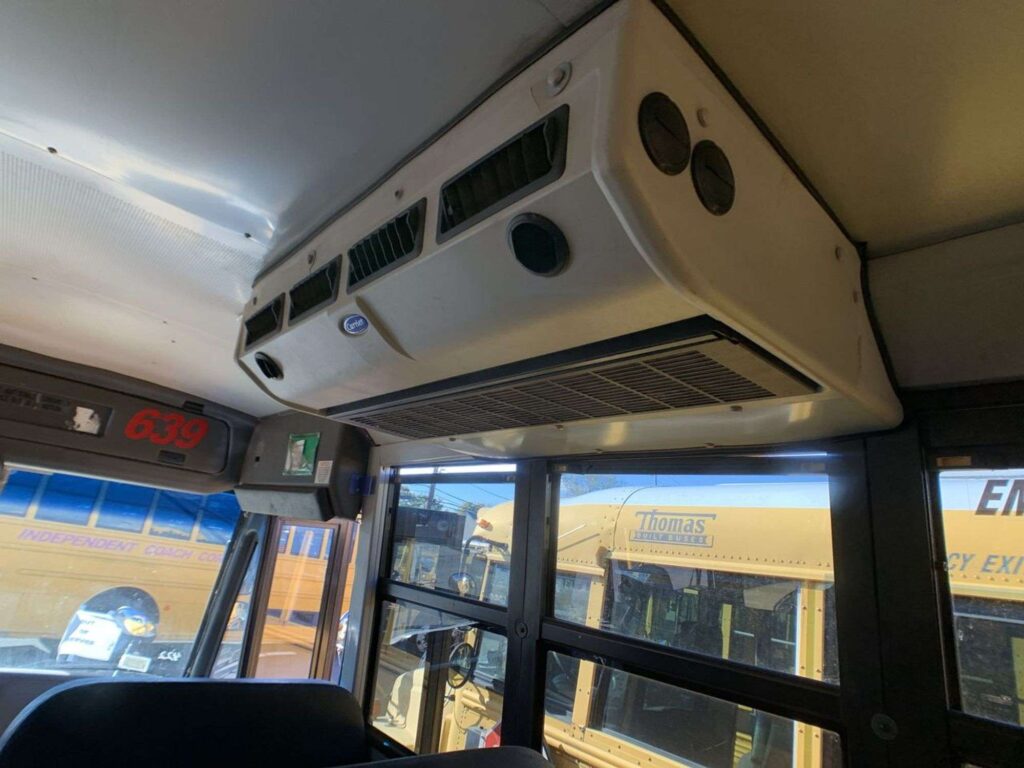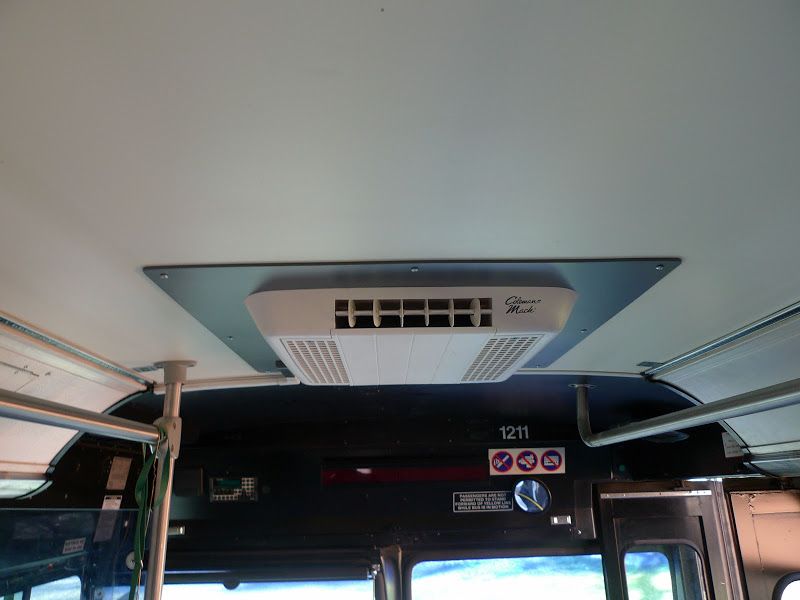Yes, many buses are equipped with air conditioning systems to provide a comfortable environment for passengers, especially in regions with hot or humid climates. The presence of air conditioning in buses can vary depending on factors such as the type of bus, the region or country, and the preferences of the transit or transportation authority.
Moreover, public transit buses, intercity buses, and some school buses often come equipped with air conditioning systems. However, it’s essential to note that not all buses have air conditioning. Some older or budget-friendly models may not be equipped with this feature.
Also, the design and type of air conditioning systems in buses can also vary. Common configurations include rooftop units, integrated systems, and retrofit systems. The use of air conditioning in buses contributes to passenger comfort, especially during warm weather, and it can play a role in attracting more riders to public transportation services.
Overview of Bus Air Conditioning

Buses are often equipped with air conditioning systems to keep passengers comfortable during their journeys. The design and type of these systems can vary, but they all serve the common purpose of regulating the temperature inside the bus. Here’s a brief overview:
- Types of Systems:
- Rooftop Units: Some buses have air conditioning units installed on the roof. These units help cool the interior efficiently without taking up space inside the bus.
- Integrated Systems: These are built-in air conditioning systems that are part of the bus’s original design. They are often more streamlined and can be customized for specific bus models.
- Retrofit Systems: In some cases, they may be retrofitted with air conditioning systems. This involves adding air conditioning to them that were initially designed without it.
- Components:
- Compressor: This is a vital part of the air conditioning system that pressurizes and circulates the refrigerant.
- Condenser: Responsible for releasing heat absorbed from inside it to the outside air.
- Evaporator: This component cools and dehumidifies the air inside the bus.
- Expansion Valve: Regulates the flow of refrigerant, controlling the temperature.
- Refrigerant: A substance circulating through the system to facilitate the cooling process.
- Controls and Sensors: These components manage and monitor the air conditioning system, ensuring optimal performance.
- Purpose:
- Passenger Comfort: The primary goal of bus air conditioning is to provide a comfortable environment for passengers, especially during hot or humid weather.
- Climate Control: Air conditioning helps maintain a consistent and pleasant temperature inside the bus, irrespective of external weather conditions.
- Variability:
- Public Transit Buses: Commonly equipped with air conditioning, especially in urban and suburban areas.
- Intercity Buses: Often have air conditioning for long-distance travel comfort.
- School Buses: Some school buses come with air conditioning, but it may not be universal.
How Bus Air Conditioning Works?
A bus air conditioning system has different parts that work together to keep the inside of the bus cool. Here’s a simple breakdown:
- Parts of the System:
- The important parts include the condenser, evaporator, compressor, magnetic clutch, alternator, fresh air device, blower, fan, return air grille, control panel, pipes, and electrical system.
- Condenser and Evaporator:
- The condenser and evaporator are inside the bus. The condenser helps release heat, and the evaporator cools the air. There’s a bunch of other things inside too, like a reservoir, filter, and valves.
- Compressor:
- The compressor, located near the engine, is the powerhouse. When you turn on the air conditioning, it starts circulating a special gas (R134a) through pipes.
- Cooling Process:
- The gas gets hot as it absorbs heat from inside the bus. Then, it goes to the condenser, where fans cool it down, turning it into a liquid.
- Refrigerant Flow:
- The liquid refrigerant goes through filters and valves, turning into a cool liquid. This liquid then goes to the evaporator through an expansion valve.
- Cooling the Air:
- The evaporator takes the heat from inside the bus, and a blower sends out cool air. As the liquid evaporates, it absorbs more heat, making the air even cooler.
- Moisture Control:
- Any moisture from the cooling process is collected and sent outside the bus.
- Repeat Process:
- The hot gas left in the bus is sucked back to the compressor, and the whole cycle starts again.
Variability in Bus Fleets
| Bus Type | Air Conditioning Presence | Additional Notes |
| Public Transit Buses | Urban Buses: Commonly equipped. | Densely populated areas with frequent stops. |
| Suburban Buses: Tend to have air conditioning. | More comfort during longer commutes. | |
| Intercity Buses: Often equipped | Convenient for passengers on extended journeys. | |
| Private/Charter Buses | Varied Standards | Different standards based on service levels. |
| Charter Buses: Frequently equipped | Meets comfort expectations for group charter trips. | |
| School Buses | Limited Adoption | Not universal due to budget constraints. |
| Geographical Variation | More common in hotter regions; varies by climate. |
Advantages of Bus Air Conditioning
- Passenger Comfort:
- Enhanced Travel Experience: Air conditioning ensures a more comfortable journey for passengers, contributing to overall satisfaction during the ride.
- Temperature Regulation: Maintains a pleasant interior temperature, especially in hot or humid weather, improving passenger well-being.
- Health and Safety:
- Improved Air Quality: Air conditioning systems often include air filtration, reducing pollutants and allergens inside the bus, which can be beneficial for passengers with respiratory issues.
- Reduced Heat Stress: Helps prevent heat-related health issues among passengers, such as dehydration or heat exhaustion.
- Climate Control:
- Consistent Temperature: Provides a stable and controlled interior climate, irrespective of external weather conditions.
- Year-Round Comfort: Offers both heating and cooling capabilities, ensuring passenger comfort in various weather conditions.
- Impact on Public Transportation:
- Increased Ridership: The presence of it can make public transportation more attractive, encouraging more people to choose buses over other modes of transport.
- Positive Perception: Further, it often contributes to a positive image of public transit, making it a more appealing option for potential riders.
- Operational Benefits:
- Driver Comfort: It contributes to a more comfortable working environment for bus drivers, enhancing their focus and job satisfaction.
- Reduced Fatigue: Passengers and drivers alike benefit from a more comfortable and less fatiguing travel experience.
- Enhanced Productivity:
- Increased Onboard Time: Passengers may be more willing to spend longer periods on buses with air conditioning, potentially leading to increased onboard activities such as work or entertainment.
- Competitive Advantage:
- Market Differentiation: Transportation providers that offer air-conditioned buses may gain a competitive edge by meeting the expectations of modern travelers seeking comfort and convenience.
Challenges and Considerations of Bus Air Conditioning:

- Energy Consumption:
- Environmental Impact: Air conditioning systems in buses can contribute to increased fuel consumption, leading to higher emissions and environmental concerns.
- Operational Costs: The energy required to power it units can result in higher operational costs for transportation providers.
- Maintenance Costs:
- Complex Systems: It systems in buses consist of various components, and maintenance can be complex and costly.
- Regular Servicing: Regular maintenance is crucial to ensure the proper functioning of air conditioning units, adding to the overall operational expenses.
- Environmental Impact:
- Refrigerant Concerns: Some refrigerants used in it systems have environmental implications, contributing to issues like ozone depletion or global warming.
- Sustainability: Balancing the comfort of passengers with sustainable practices is a challenge, as traditional air conditioning systems may rely on environmentally harmful technologies.
- Technological Advances:
- Integration with Green Technology: Incorporating environmentally friendly and energy-efficient technologies into bus air conditioning systems can be a challenge.
- Cost of Innovation: Adopting the latest advancements in it technology may be expensive, posing financial challenges for transit agencies or bus operators.
- Equity and Accessibility:
- Uniform Access: Ensuring that all buses, regardless of type or route, are equipped with air conditioning can be challenging due to budget constraints and varying passenger needs.
- Affordability: While air conditioning enhances comfort, it can also contribute to increased ticket prices, potentially affecting the affordability of public transportation for some individuals.
- Climate Variability:
- Seasonal Demand: The need for it is more pronounced during specific seasons, leading to underutilization during cooler months and potential inefficiencies in resource allocation.
- Adaptability: Bus air conditioning systems must be adaptable to varying climatic conditions, ensuring optimal performance in diverse environments.
- User Experience:
- Temperature Preferences: Balancing the comfort needs of diverse passengers with different temperature preferences can be challenging, as individual perceptions of a comfortable temperature may vary.
- Noise Levels: It units can contribute to increased noise levels inside the bus, impacting the overall passenger experience.
FAQ’s
1. How does AC work in a bus?
Fans pull passenger compartment air through a filter, removing particulate matter, then pass the cleaned air through the evaporator coil. The refrigerant undergoes a change of pressure from high to low, and a corresponding change-of-state from a liquid to a gas, through a process called evaporation.
2. Do bus drivers have air conditioning?
Yes, Bus drivers are supposed to have air conditioning, as mandated by TFL since 2012. However, some bus companies choose not to ensure the working condition of the air conditioning.
3. Can you add AC to a bus?
Yes, air conditioning can be added to a bus through various methods, such as upgrading the front-panel A/C system, adding an evaporator in the front or back, or installing a roof-mounted unit.
4. Why is the bus so cold?
Buses and trains are enclosed spaces, and the HVAC system (heating, ventilation, and air conditioning) is kept on to ensure proper air circulation for everyone on board.
5. Which type of AC is used in a bus?
There are various types, including the Sub Engine Driven Type, which is a standalone complete air conditioning system driven by an internal combustion engine.
6. Is bus voltage AC or DC?
The conventional DC microgrid has a DC bus voltage maintained by the utility through an AC/DC converter, and other loads are connected to the DC bus through DC/DC converters.
7. How do you stay cool on a bus?
Tips include bringing shade, staying hydrated, minimizing heat exposure, insulating beverages, using cooling apparatus, utilizing hydration stations, and dressing lightly.
8. Why is there no AC in London buses?
Temporarily, AC was disabled during the pandemic to create a safer work environment for bus drivers. From 2024, buses will have CO2 monitors to monitor air quality.
Final Words
Whether buses have air conditioning depends on factors like the type of bus and regional needs. Public transit buses in busy areas often have air conditioning, and intercity buses usually do to cater to longer journeys.
Moreover, Private and charter buses vary in standards. School buses, due to budget constraints, may lack air conditioning, especially in cooler regions. The decision often depends on the bus type, purpose, and priorities of transportation authorities.
As technology evolves, future bus fleets may see changes in the prevalence of air conditioning.

